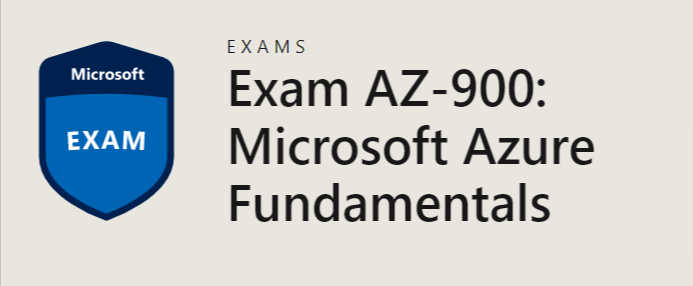Certifications introductions
Microsoft has a wide rang of easy-to-earn certifications called Fundamentals. These are a door open to Microsoft certifications. In this case, this is Azure Fundamentals AZ900
AZ900 Certification summary
This is the content provided from Microsoft to study:
-
Describe cloud concepts (25–30%)
- Describe cloud computing
• Define cloud computing
• Describe the shared responsibility model
• Define cloud models, including public, private, and hybrid
• Identify appropriate use cases for each cloud model
• Describe the consumption-based model
• Compare cloud pricing models - Describe the benefits of using cloud services
• Describe the benefits of high availability and scalability in the cloud
• Describe the benefits of reliability and predictability in the cloud
• Describe the benefits of security and governance in the cloud
• Describe the benefits of manageability in the cloud - Describe cloud service types
• Describe infrastructure as a service (IaaS)
• Describe platform as a service (PaaS)
• Describe software as a service (SaaS)
• Identify appropriate use cases for each cloud service (IaaS, PaaS, SaaS)
- Describe cloud computing
-
Describe Azure architecture and services (35–40%)
- Describe the core architectural components of Azure
• Describe Azure regional, regional pairs, and sovereign regions
• Describe availability zones
• Describe Azure datacenters
• Describe Azure resources and resource groups
• Describe subscriptions
• Describe management groups
• Describe the hierarchy of resource groups, subscriptions, and management groups - Describe Azure compute and networking services
• Compare compute types, including container instances, virtual machines (VMs), and functions
• Describe VM options, including Azure Virtual Machines, Azure Virtual Machine Scale Sets,
availability sets, and Azure Virtual Desktop
• Describe resources required for virtual machines
• Describe application hosting options, including the Web Apps feature of Azure App Service,
containers, and virtual machines
• Describe virtual networking, including the purpose of Azure Virtual Networks, Azure virtual
subnets, peering, Azure DNS, Azure VPN Gateway, and Azure ExpressRoute
• Define public and private endpoints - Describe Azure storage services
• Compare Azure storage services
• Describe storage tiers
• Describe redundancy options
• Describe storage account options and storage types
• Identify options for moving files, including AzCopy, Azure Storage Explorer, and Azure File Sync
• Describe migration options, including Azure Migrate and Azure Data Box - Describe Azure identity, access, and security
• Describe directory services in Azure, including Azure Active Directory (Azure AD) and Azure
Active Directory Domain Services (Azure AD DS)
• Describe authentication methods in Azure, including single sign-on (SSO), multifactor
authentication, and passwordless
• Describe external identities and guest access in Azure
• Describe Azure AD Conditional Access
• Describe Azure role-based access control (RBAC)
• Describe the concept of Zero Trust
• Describe the purpose of the defense in depth model
• Describe the purpose of Microsoft Defender for Cloud
- Describe the core architectural components of Azure
-
Describe Azure management and governance (30–35%)
- Describe cost management in Azure
• Describe factors that can affect costs in Azure
• Compare the Pricing calculator and the Total Cost of Ownership (TCO) calculator
• Describe the Azure Cost Management and Billing tool
• Describe the purpose of tags - Describe features and tools in Azure for governance and compliance
• Describe the purpose of Azure Blueprints
• Describe the purpose of Azure Policy
• Describe the purpose of resource locks
• Describe the purpose of the Service Trust Portal - Describe features and tools for managing and deploying Azure resources
• Describe the Azure portal
• Describe Azure Cloud Shell, including Azure CLI and Azure PowerShell
• Describe the purpose of Azure Arc
• Describe Azure Resource Manager and Azure Resource Manager templates (ARM templates) - Describe monitoring tools in Azure
• Describe the purpose of Azure Advisor
• Describe Azure Service Health
• Describe Azure Monitor, including Log Analytics, Azure Monitor alerts, and Application Insights
- Describe cost management in Azure
Exam information
This exam type is really common with Microsoft. An exam test-like. With 42 questions and, to pass it, you have to answer coorectly more than 70%. Exam time: 1h
Study recommendations
Finally, my personal advice to study this certification is access to following free resources:
1.- Microsoft Learn
2.- Microsoft Virtual Training Days
3.- Examtopics



Deixa un comentari